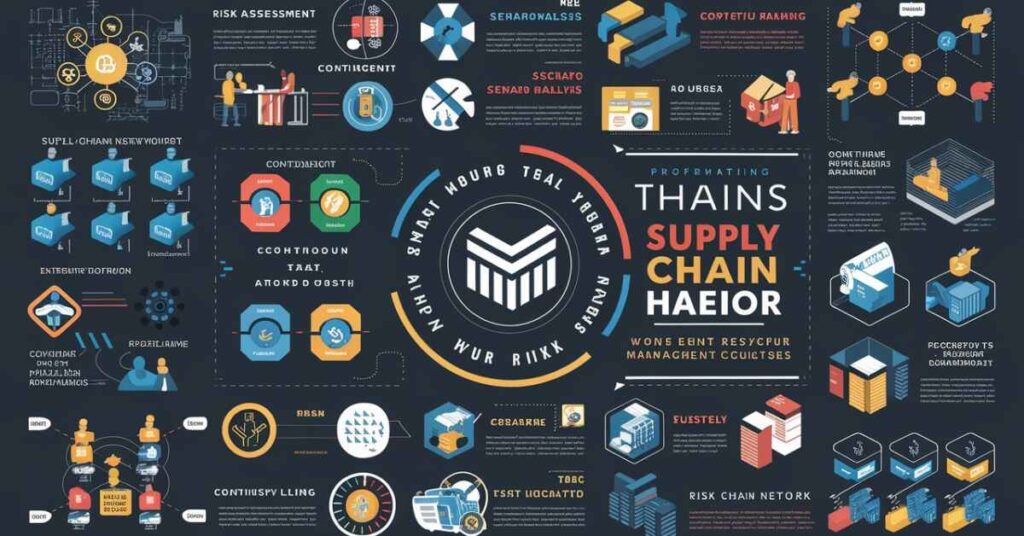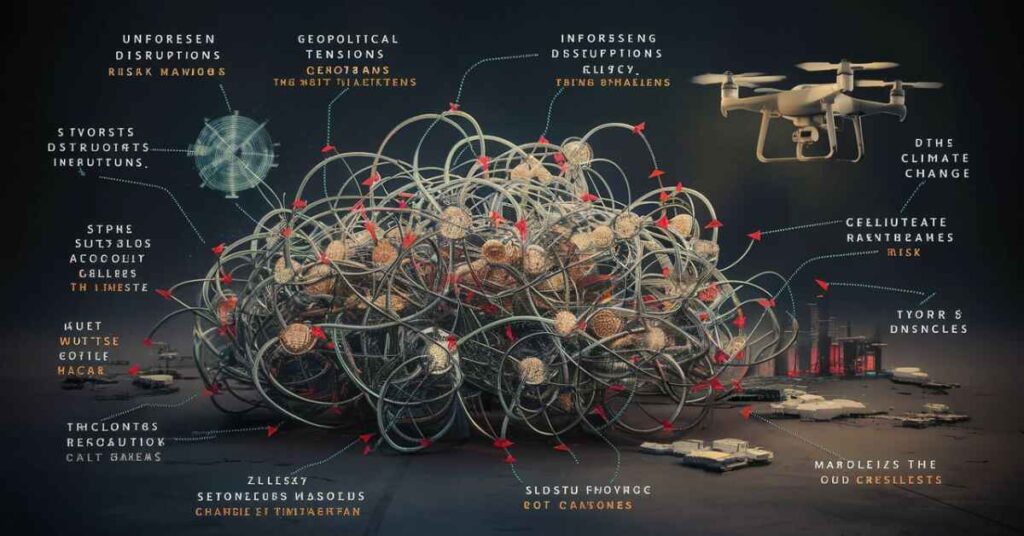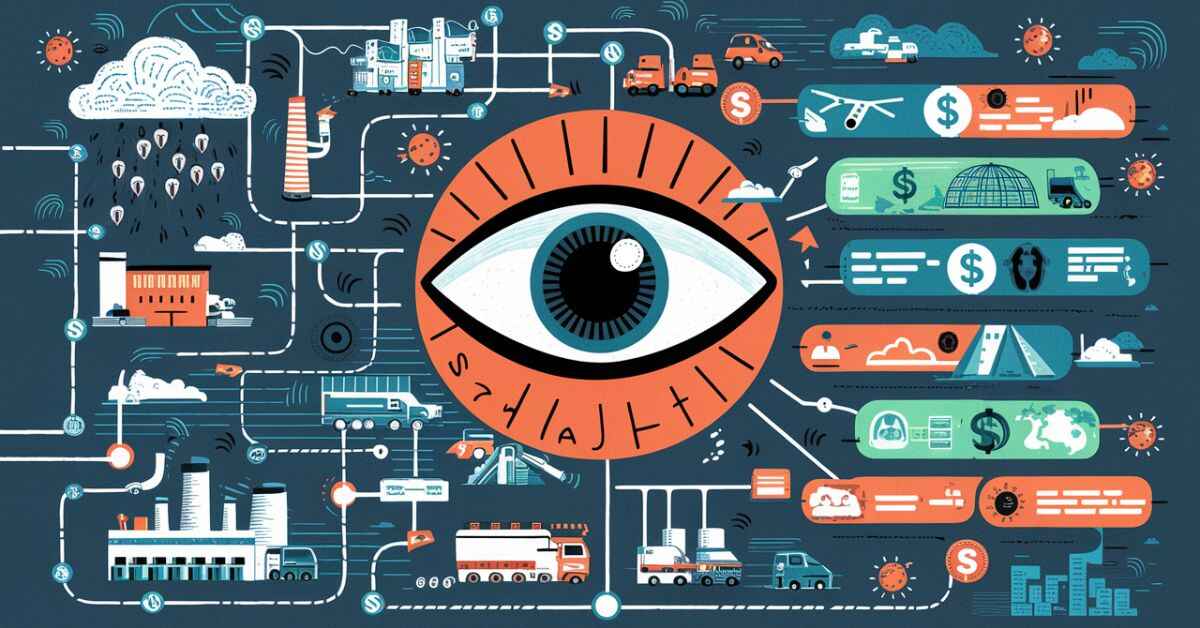In today’s interconnected global economy supply chains have become gradually complex and at risk to disruptions. From natural tragedies to geopolitical pressures, the dangers facing supply chains are several and ever-evolving.
Understanding Supply Chain Risk
Before we enquire into the particulars of risk management. It’s necessary to comprehend what we mean by supply chain risk. Simply put, supply chain risk talks about any prospective disruption or threat that could impact the flow of things, facilities, or information within a supply chain system. These risks can be both outdoors and inside. They can pose significant concerns for businesses if not properly achieved.
Types of Supply Chain Risks
External Risks:
- Natural disasters (hurricanes, earthquakes, floods)
- Geopolitical events (trade wars, sanctions, political instability)
- Economic fluctuations (recessions, currency volatility)
- Pandemics (as we’ve seen with COVID-19)
Internal Risks:
- Inventory issues (stockouts, overstocking)
- Quality control problems
- Supplier reliability
- Transportation delays
- Cybersecurity threats
The impact of these risks on US businesses can be severe. The 2011 tsunami in Japan disturbed global supply chains affecting industries from locomotives to electronics. The COVID-19 pandemic exposed vulnerabilities in supply chains across various sectors leading to shortages of essential goods and materials.
The Essence of Supply Chain Risk Management

Now that we’ve identified what supply chain risks are let’s discover the concept of risk management in the supply chain. At its core supply chain risk management is a systematic approach to ordering, evaluating, and justifying risks within a supply chain network. It’s about being proactive rather than responsive, anticipating prospective disruptions before they occur, and having strategies in place to minimize their impact.
The goals of risk management in supply chains include:
- Ensuring business continuity
- Protecting brand reputation
- Maintaining customer satisfaction
- Minimizing financial losses
- Improving overall supply chain resilience
While general risk management emphasizes broad organizational risks, supply chain risk management especially targets the unique challenges and complexities of supply networks.
Key Steps in Supply Chain Risk Management
Effective risk management in the supply chain involves a systematic process. Here are the key steps:
Risk Identification:
This involves carefully mapping out your supply chain and recognizing potential risks at each phase. It’s crucial to look beyond gradual suppliers and consider risks during the entire network.
Risk Assessment and Prioritization:
Once risks are recognized, they need to be appraised based on their likelihood and prospective impact. This helps in arranging which risks to address first.
Risk Mitigation Strategies:
Developing and applying strategies to mitigate identified risks. This could involve varying suppliers, building cushion records, or applying contingency plans.
Monitoring and Review:
Risk management is an ongoing procedure. Continuously observe your supply chain for new threats and review the inefficiency of your mitigation strategies.
Tools and Techniques for Supply Chain Risk Management
To effectively manage supply chain risks, businesses can leverage various tools and techniques:

Risk Mapping and Visualization
Risk recording involves creating visual illustrations of your supply chain and related risks. This can help in identifying exposures and understanding the interconnections between different threats.
Predictive Analytics and AI in Risk Management
Advanced analytics and artificial intelligence can help in anticipating potential disturbances and simulating various risk situations. These technologies can progress vast amounts of data to identify outlines and predict future risks.
Simulation and Scenario Planning
Scenario planning includes creating and analyzing various “what-if” scenarios. This helps productions prepare for not the same possible futures and develop suitable response strategies.
Blockchain for Supply Chain Transparency
Blockchain technology can improve supply chain transparency and traceability, making it easier to identify and mitigate risks related to product superiority, fabricating, and compliance.
Best Practices in Supply Chain Risk Management for US Companies
To effectively manage supply chain risks, US companies should consider the following best practices:
Develop a Risk-Aware Culture:
Naturally, a culture where risk management is everyone’s accountability. This involves training staff at all levels to identify and report latent risks.
Diversify Suppliers and Sourcing Strategies:
Don’t put all your eggs in one bag. Having numerous suppliers and obtaining from different ecological regions can help alleviate risks associated with merchant failure or regional disturbances.
Build Resilience through Flexibility and Redundancy:
Plan your supply chain with elasticity in mind. This could include having backup dealers, alternative shipping routes, or bumper inventory.
Collaborate on Risk Management with Partners:
Work closely with dealers, customers, and other shareholders to share information and cooperatively manage risks.
Implement Robust Information Systems:
Invest in machinery that provides real-time perceptibility into your supply chain. This can help in quickly recognizing and responding to possible disruptions.
Successful Supply Chain Risk Management in Action
Let’s look at some real-world examples of effective supply chain risk management:
Procter & Gamble’s Risk Management Strategy
Procter & Gamble (P&G) has been recognized for its robust supply chain risk management practices. The company uses advanced analytics to monitor its global supply network and predict potential disruptions. During Hurricane Katrina in 2005, P&G’s risk management system allowed them to quickly reroute shipments and adjust production schedules, minimizing the impact on their operations.
Toyota’s Response to the 2011 Japan Tsunami
The 2011 tsunami in Japan severely disrupted Toyota’s supply chain. In response, Toyota implemented a comprehensive risk management strategy. They worked on diversifying their supplier base, standardizing parts across models to increase flexibility, and improving their ability to quickly identify the source of disruptions in their supply chain. These measures significantly improved Toyota’s resilience to future disruptions.
Challenges in Implementing Supply Chain Risk Management
While the welfare of supply chain risk management is clear employment can be thought-provoking. Some common obstacles include:

Resource Constraints:
Implementing all-inclusive risk management plans can be resource-intensive, both in terms of time and money.
Data Quality and Integration Issues:
Actual risk management relies on exact, timely data. Assimilating data from various sources and certifying its inferiority can be interesting.
Balancing Risk Mitigation with Efficiency:
There’s often a rigidity between risk mitigation (which might involve redundancies) and supply chain efficiency.
Overcoming Organizational Silos:
Risk management involves collaboration across different responsibilities and purposes, which can be challenging in siloed organizations.
Read this Blog: State-by-State Guide: Affordable Supply Chain Management Associate Degrees at Community Colleges and Tech Schools
The Future of Supply Chain Risk Management
As we look to the future, several trends are likely to shape supply chain risk management:
Increased Use of AI and Machine Learning:
These technologies will become more sophisticated in predicting and mitigating risks.
Greater Focus on Sustainability:
Environmental risks and sustainability concerns will play a larger role in supply chain risk management.
Enhanced Supply Chain Visibility:
Technologies like IoT and blockchain will provide even greater visibility into supply chains.
Rise of Digital Twins:
Digital replicas of physical supply chains will allow for more sophisticated scenario planning and risk analysis.
Conclusion
In an all the time more complex and undefined business environment, risk management in the supply chain is not time-consuming and optional for US businesses it’s a need. By implementing robust risk management plans, companies can not only protect themselves from possible disruptions but also gain an inexpensive advantage.
Effective supply chain risk management is an ongoing procedure. It requires continuous watching, assessment, and alteration. As the business background evolves so too must your risk management strategies.
By selecting supply chain risk administration, US businesses can build more irrepressible, agile, and inexpensive supply chains. They’ll be better well-appointed to navigate the encounters and seize the chances of our ever-changing global economy.


![Find a Section 8 houses for rent with no deposit Revealed! [2024]](https://busslirra.com/wp-content/uploads/2024/08/Find-a-Section-8-houses-for-rent-with-no-deposit-Revealed-2024-300x157.jpg)







![Find a Section 8 houses for rent with no deposit Revealed! [2024]](https://busslirra.com/wp-content/uploads/2024/08/Find-a-Section-8-houses-for-rent-with-no-deposit-Revealed-2024-150x150.jpg)
